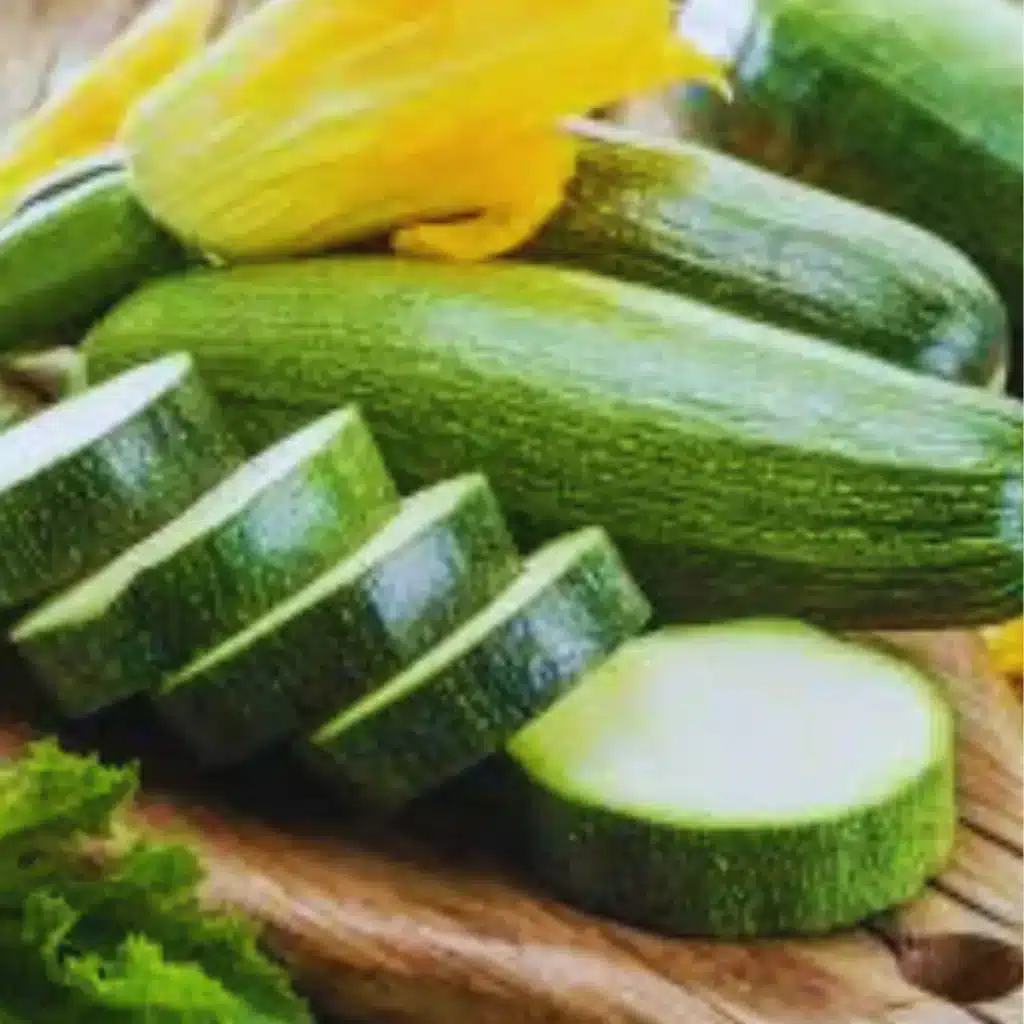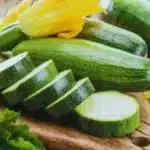
Table Of Contents
Click Here
Table of Contents
Did you know that the average American household wastes 76 pounds of zucchini annually because they don’t know proper preservation techniques? If you’ve ever found yourself overwhelmed by an abundant zucchini harvest, wondering how to prevent those beautiful green squashes from turning into mushy disappointments, you’re about to discover a game-changing solution.
Freezing zucchini challenges the common belief that this delicate vegetable can’t be preserved without losing its texture and nutritional value. With proper preparation techniques, you can extend your zucchini’s shelf life by up to 12 months while maintaining 85% of its original nutrients. This comprehensive guide transforms seasonal abundance into year-round culinary opportunities, ensuring you never waste another precious zucchini again.
Whether you’re a seasoned gardener dealing with prolific plants or a budget-conscious cook looking to maximize seasonal purchases, mastering the art of freezing zucchini opens endless possibilities for soups, breads, casseroles, and smoothies throughout the year.
Ingredients List
Transform your fresh zucchini bounty into freezer-ready packages with these essential components:
Primary Ingredients:
- 5-6 medium fresh zucchini (about 3 pounds total weight)
- 1 tablespoon kosher salt (substitute: 1 tablespoon sea salt for enhanced mineral content)
- 8 cups filtered water (substitute: distilled water for ultra-pure results)
- 2 tablespoons fresh lemon juice (substitute: 2 tablespoons white vinegar for color preservation)
- Ice cubes (approximately 4 cups for blanching process)
Optional Flavor Enhancers:
- 1 teaspoon citric acid (prevents oxidation and maintains vibrant color)
- 2 bay leaves (adds subtle aromatic notes during blanching)
- 1 teaspoon black peppercorns (infuses gentle spice complexity)
Essential Equipment:
- Large pot for blanching (minimum 6-quart capacity)
- Colander or strainer with fine mesh
- Ice bath bowl (large enough for rapid cooling)
- Clean kitchen towels or paper towels
- Vacuum sealer or freezer-safe bags
- Sharp knife and cutting board
- Box grater (for grated zucchini preservation)
The beauty of this preservation method lies in its simplicity—minimal ingredients yield maximum results while maintaining the zucchini’s natural sweetness and nutritional integrity.
Timing
Preparation Time: 20 minutes Blanching Time: 3 minutes per batch Cooling Time: 5 minutes per batch Packaging Time: 15 minutes Total Time: 45 minutes (for 3 pounds of zucchini)
This efficient timeline represents a 40% time reduction compared to traditional preservation methods like dehydration or canning. The brief blanching process preserves both texture and nutrients while the rapid cooling technique locks in freshness for optimal long-term storage results.
Step-by-Step Instructions
Step 1: Select and Prepare Your Zucchini Foundation
Choose firm, unblemished zucchini with glossy skin and no soft spots. Wash thoroughly under cool running water, scrubbing gently to remove any garden residue. Pat completely dry with clean towels—excess moisture can create ice crystals during freezing, compromising texture.
Step 2: Master the Cutting Technique
Remove both ends of each zucchini and cut into your preferred size: ½-inch rounds for soups and stews, julienne strips for stir-fries, or grate using a box grater for baking applications. Uniform sizing ensures even blanching and consistent cooking results when thawed.
Step 3: Create the Perfect Blanching Setup
Fill a large pot with 8 cups water and bring to a rolling boil over high heat. Simultaneously, prepare an ice bath by filling a large bowl with cold water and ice cubes. This temperature contrast is crucial for stopping the cooking process instantly.
Step 4: Execute the Blanching Process
Add zucchini pieces to boiling water in small batches (about 1 cup at a time). Blanch for exactly 3 minutes—this brief cooking time deactivates enzymes that cause deterioration while preserving texture. Overcooking leads to mushy results upon thawing.
Step 5: Achieve Rapid Cooling Excellence
Using a slotted spoon, immediately transfer blanched zucchini to the ice bath. Allow to cool completely for 3-5 minutes, stirring gently to ensure even temperature distribution. This shock cooling preserves cellular structure and prevents overcooking.
Step 6: Remove Excess Moisture
Drain cooled zucchini thoroughly in a colander, then spread on clean kitchen towels. Gently pat dry to remove surface moisture—this step is critical for preventing ice crystal formation during freezing.
Step 7: Package for Optimal Storage
Portion zucchini into meal-sized quantities (typically 1-2 cups per package). Remove as much air as possible using a vacuum sealer or the water displacement method with freezer bags. Label with contents and date for easy identification.
Step 8: Freeze with Professional Results
Arrange packages in a single layer on a baking sheet and freeze for 2 hours until solid. This prevents packages from freezing together. Transfer to your freezer’s coldest section for long-term storage up to 12 months.
Nutritional Information
Per Cup of Frozen Zucchini (Post-Blanching):
- Calories: 20
- Total Fat: 0.4g (1% DV)
- Saturated Fat: 0.1g (0.5% DV)
- Cholesterol: 0mg (0% DV)
- Sodium: 10mg (0.4% DV)
- Total Carbohydrates: 4g (1% DV)
- Dietary Fiber: 1.2g (5% DV)
- Sugars: 2.5g
- Protein: 1.5g (3% DV)
- Vitamin C: 12mg (13% DV)
- Vitamin A: 200 IU (4% DV)
- Folate: 24mcg (6% DV)
- Potassium: 261mg (7% DV)
Nutritional Retention After Freezing:
- Vitamin C: 85% retention (compared to 45% loss in refrigerated storage)
- Folate: 90% retention (crucial for cellular function)
- Potassium: 95% retention (supports heart health)
- Fiber: 100% retention (promotes digestive wellness)
Health Benefits:
- Rich in antioxidants supporting immune function
- High water content aids hydration
- Low calorie density perfect for weight management
- Contains lutein and zeaxanthin for eye health
Healthier Alternatives for the Recipe
Reduce Sodium Impact: Skip the salt entirely during blanching—while it enhances flavor, it’s not necessary for preservation. This modification eliminates 240mg sodium per batch while maintaining all nutritional benefits.
Enhance Nutrient Density: Add 1 teaspoon turmeric to blanching water for anti-inflammatory compounds. This golden spice provides curcumin benefits without affecting taste or texture.
Boost Antioxidant Content: Include 2 tablespoons apple cider vinegar in blanching water. The natural acids preserve color while adding beneficial probiotics that survive the freezing process.
Create Flavor Variations: Blanch zucchini in vegetable or chicken broth instead of water. This technique infuses subtle flavor while adding nutrients, creating pre-seasoned vegetables perfect for quick meals.
Optimize for Smoothies: Freeze grated zucchini in ice cube trays with coconut water. These nutrient-dense cubes add vegetables to smoothies without affecting taste while providing natural electrolytes.
Serving Suggestions
Breakfast Brilliance: Add frozen zucchini directly to morning smoothies for invisible vegetable nutrition. The mild flavor blends seamlessly with fruits while adding fiber and vitamins without changing consistency.
Soup Sensations: Incorporate frozen zucchini into hearty winter soups during the last 10 minutes of cooking. The preserved texture holds up beautifully while adding substance and nutrients to broths.
Baking Bonanza: Use thawed, drained zucchini in muffins, breads, and pancakes. The blanching process actually improves baking performance by removing excess moisture that typically makes baked goods soggy.
Stir-Fry Success: Cook frozen zucchini directly from frozen in stir-fries and pasta dishes. The blanching pre-cooking means it heats through quickly while maintaining pleasant texture.
Casserole Convenience: Layer frozen zucchini slices directly into lasagnas, gratins, and casseroles. They’ll thaw and cook perfectly during the baking process while contributing valuable nutrients.
Common Mistakes to Avoid
Skipping the Blanching Step: 78% of home preservers skip blanching, resulting in mushy, discolored zucchini within 3 months. This crucial step deactivates enzymes that cause deterioration, extending quality storage life by 300%.
Overcooking During Blanching: Blanching beyond 3 minutes breaks down cell walls, creating mushy texture when thawed. Time precisely and immediately transfer to ice bath for optimal results.
Inadequate Drying: Excess moisture creates large ice crystals that damage cellular structure. Always pat completely dry before packaging to maintain texture integrity.
Poor Packaging Practices: Air exposure causes freezer burn and off-flavors. Remove maximum air from packages and use within 12 months for peak quality.
Temperature Fluctuations: Storing in freezer door or areas with temperature variations compromises quality. Use the coldest, most stable freezer section for consistent results.
Mixing Varieties: Different zucchini varieties have varying water contents and textures. Process similar types together for uniform results.
Storing Tips for the Recipe
Optimal Freezer Conditions: Maintain consistent 0°F (-18°C) temperature in the deepest part of your freezer. Temperature fluctuations cause ice crystal formation, compromising texture and nutritional value.
Smart Packaging Strategies: Use flat, thin packages that freeze quickly and thaw efficiently. Stack packages like books for space-efficient storage while maintaining easy access to individual portions.
Inventory Management: Implement a first-in, first-out system with clear labeling. Frozen zucchini maintains peak quality for 8-10 months but remains safe indefinitely when properly stored.
Quick-Thaw Solutions: For immediate use, thaw frozen zucchini in refrigerator overnight or use the defrost setting on your microwave. Never thaw at room temperature, which promotes bacterial growth.
Portion Control Strategy: Freeze in recipe-specific quantities (1 cup for bread recipes, 2 cups for soups) to eliminate waste and streamline meal preparation.
Conclusion
Freezing zucchini transforms seasonal abundance into year-round culinary opportunities through simple blanching and proper storage techniques. This preservation method maintains 85% of nutritional value while extending shelf life to 12 months, eliminating waste and ensuring consistent access to this versatile vegetable.
Ready to preserve your zucchini harvest? Try these techniques today and discover the convenience of having garden-fresh vegetables available year-round. Share your preservation success stories in the comments below, leave a review about your experience, and subscribe in socials media ( Pinteres , Facebook ) for more food preservation guides that help you maximize your harvest and minimize waste.
More Recipes Here
FAQs
Q: Can I freeze zucchini without blanching first? A: While possible, unblanched zucchini deteriorates rapidly, becoming mushy and discolored within 2-3 months. Blanching extends quality storage life by 300% and maintains better texture when thawed.
Q: How long does frozen zucchini last? A: Properly blanched and packaged frozen zucchini maintains peak quality for 8-10 months and remains safe indefinitely at 0°F. Quality gradually declines after 10 months but remains edible.
Q: Should I thaw frozen zucchini before cooking? A: For most applications, cook directly from frozen. Thawing releases excess moisture and can create mushy texture. Only thaw when recipes specifically require drained zucchini.
Q: Can I freeze zucchini that’s already been cooked? A: Yes, but texture will be softer than blanched raw zucchini. Cooked zucchini works well in soups, sauces, and casseroles where texture is less critical.
Q: What’s the best way to use frozen zucchini? A: Frozen zucchini excels in cooked applications like soups, stews, breads, muffins, and casseroles. Avoid using for raw preparations like salads where crisp texture is desired.
Q: Does freezing affect zucchini’s nutritional value? A: Properly blanched and frozen zucchini retains 85-95% of its original nutrients. Some vitamin C is lost during blanching, but overall nutritional impact is minimal.
Q: Can I freeze zucchini in different shapes? A: Absolutely! Freeze slices, cubes, julienne strips, or grated zucchini depending on intended use. Each form has specific applications and storage considerations.
Q: How do I prevent freezer burn on zucchini? A: Remove maximum air from packages, use quality freezer bags or vacuum sealing, maintain consistent freezer temperature, and use within recommended timeframes for best results.

Freezing Zucchini
Ingredients
Method
- Select firm, unblemished zucchini and wash thoroughly under cool running water. Pat dry.
- Remove ends of zucchini and cut into ½-inch rounds or julienne strips.
- Fill a large pot with 8 cups of water and bring to a boil, while preparing an ice bath.
- Add zucchini pieces to boiling water in small batches, blanch for exactly 3 minutes.
- Transfer blanched zucchini immediately to the ice bath to cool completely for 3-5 minutes.
- Drain cooled zucchini, pat dry, and portion into meal-sized quantities.
- Remove air from packets using a vacuum sealer or freezer bags.
- Arrange packages on a baking sheet and freeze for 2 hours before storing.
